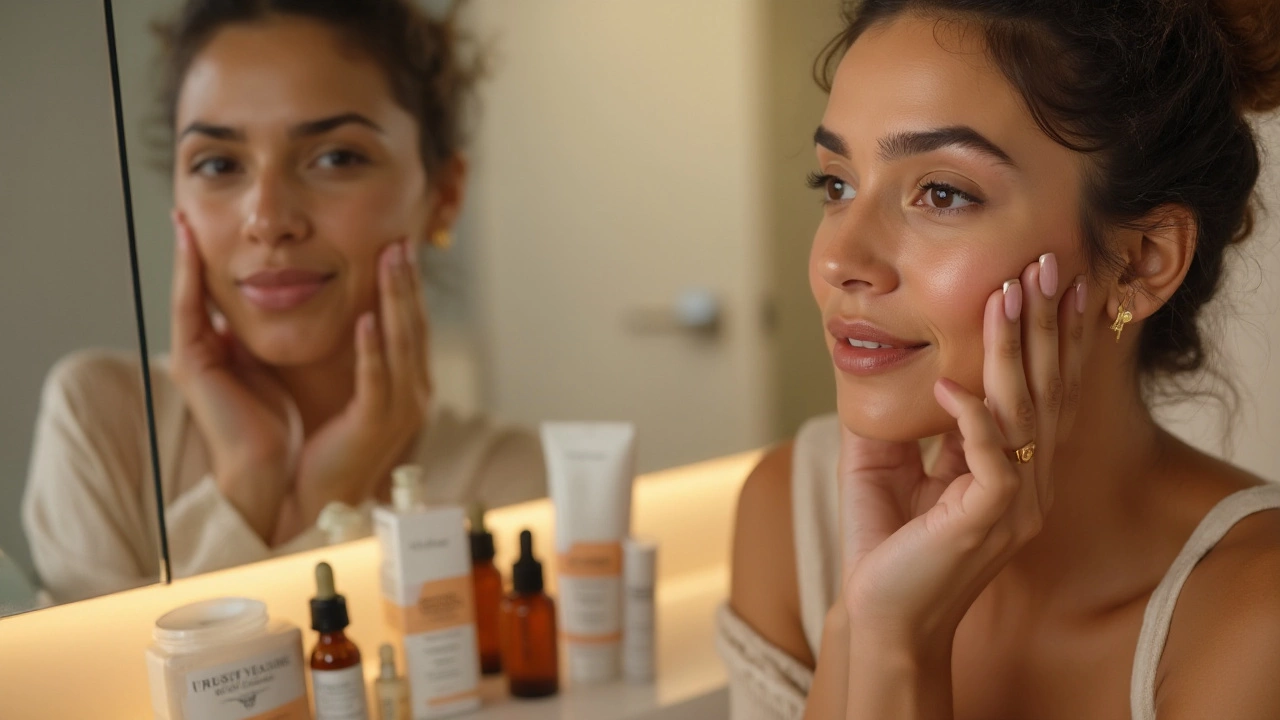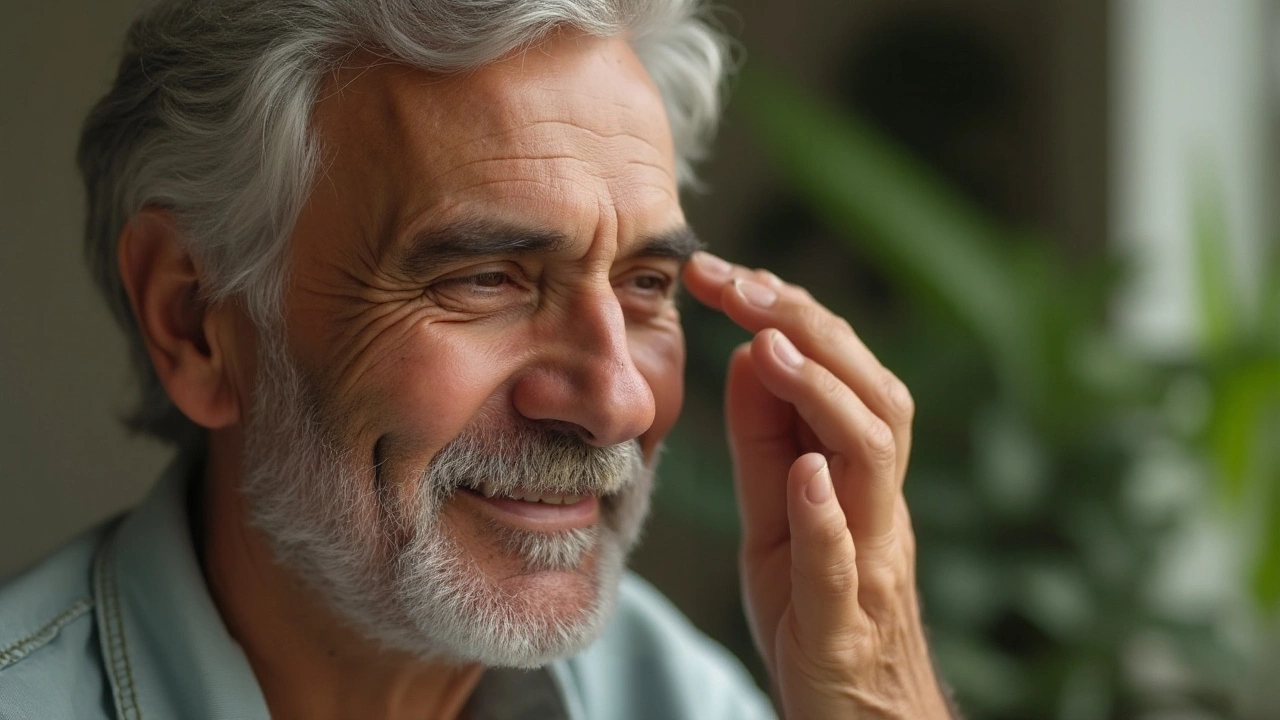
Aging is a natural part of life, but the quest for youth remains timeless. In today's world, there are countless treatments available for those looking to rejuvenate their skin and reduce signs of aging.
Whether you're considering diving into creams rich in retinoids or curious about the wonders of laser therapies, choosing the right path requires knowledge and insight into what each treatment offers.
This article explores a variety of options, ranging from easily accessible topical solutions to medically advanced dermatological procedures, not forgetting the natural remedies you can incorporate into your daily routine.
Join us as we delve into the fascinating world of anti-aging treatments to help you find the best way to achieve that radiant, youthful glow you desire.
- Understanding Aging Skin
- Topical Treatments and Their Effects
- Advanced Dermatological Procedures
- Natural Approaches to Skin Rejuvenation
Understanding Aging Skin
Aging is a journey that no one can escape, and it is beautifully mirrored in our skin. As the body's largest organ, the skin is continuously exposed to a variety of environmental and internal factors that influence the aging process. From the sun's relentless rays to the transformative years of hormonal changes, the skin tells a story of time. One of the first things to be aware of is how skin naturally thins with age. This thinning process is due to a decline in collagen, a key protein that provides structure and elasticity to the skin. Recent studies show that from the age of 20, we start producing about 1% less collagen in the skin each year, which manifests as fine lines and sagging.
But collagen is just one piece of the puzzle. There is also elastin, another crucial protein that allows the skin to snap back into place when it is pinched or pulled. As we age, elastin fibers slowly deteriorate, which results in less supple skin. Moreover, the decline in the production of natural oils results in dry, flaky skin, further emphasizing the appearance of wrinkles. Research has shown that post-menopausal women experience a sharp drop in estrogen levels, which can cause significant loss of skin thickness and elasticity. This effect is something dermatologists are keenly aware of when developing treatments and skincare routines for clients.
In addition to the biological factors, lifestyle choices significantly influence skin aging. Diets rich in antioxidants, regular physical activity, and adequate hydration can mitigate some of the impacts of aging. Exposure to pollutants and ultraviolet (UV) light accelerates skin aging, leading unmistakably to conditions such as photoaging. It is estimated that 80% of facial aging is due to sun exposure. Applying broad-spectrum sunscreen daily is one of the most effective measures to counteract these effects.
"Age is not the enemy. It's how we approach and manage it that defines grace," says renowned dermatologist Dr. Lisa Kogan.
Also essential is understanding the role of genetics in skin aging. While we cannot change certain inherited traits, we can protect against external accelerators and make informed decisions on treatments. Technologies such as genetic profiling are beginning to allow deeper insights into personal skincare, characterizing how our unique DNA makeup can react to various treatments and environmental factors. Combining skincare strategies with advances in dermatology ensures that our approach to anti-aging is comprehensive and personalized, optimizing skin health at every stage of life.

Topical Treatments and Their Effects
Topical treatments play a crucial role in modern skin care routines, especially when it comes to addressing the visible signs of aging. Broadly speaking, these products range from prescription-strength solutions to over-the-counter options, each with its unique benefits and mechanisms. Retinoids, a derivative of vitamin A, are frequently heralded as a powerhouse ingredient thanks to their ability to increase cell turnover and stimulate collagen production. Regular use of retinoids can help diminish fine lines and hyperpigmentation, but it’s important for new users to start slow to prevent irritation.
Another indispensable ingredient in anti-aging topical treatments is hyaluronic acid. This compound is known for holding up to 1,000 times its weight in water, making it excellent for skin hydration and plumping. As we age, skin tends to lose moisture, which can accentuate the appearance of wrinkles. Hyaluronic acid helps maintain skin elasticity by drawing moisture from the environment, giving the skin a smoother, more youthful look. Incorporating serums or creams containing hyaluronic acid can make a noticeable difference in the skin's appearance over time.
Additionally, antioxidants like vitamin C offer a potent defense against environmental stressors such as pollution and UV exposure, which are known to accelerate aging. By neutralizing free radicals, vitamin C-based serums or creams can enhance the skin's natural repair process and reduce damage. Consistent use can help brighten the complexion and even out skin tone, giving the skin a radiant appearance. Dermatologists often recommend layering antioxidants with sunscreens to maximize protection, as UV rays can penetrate through clouds and glass, causing cumulative damage over the years.
"In some cases, the best defense against skin aging is to start a topical regimen early," suggests Dr. Washington, a notable dermatologist. "Combining actives like retinoids, hyaluronic acid, and antioxidants can yield remarkable results when used consistently over time." This insight underlines the importance of prevention alongside treatment, emphasizing that early intervention is often the key to preserving youthful skin. With the wide array of anti-aging products available, choosing the right combination might seem daunting, yet it's important to remember that patience and consistency are crucial to achieving the desired results.Of course, while many topical treatments can be incredibly effective, they must be part of a holistic approach to skincare. Prioritizing sun protection remains vital, even when using retinoids or other powerful anti-aging ingredients. Most dermatologists recommend using a broad-spectrum SPF of at least 30, regardless of skin type or weather conditions. More so, ensuring you cleanse your skin effectively every evening and follow up with a moisturizing regimen is equally important to support the skin's natural healing processes.

Advanced Dermatological Procedures
Navigating the waters of anti-aging requires an understanding of advanced dermatological treatments that can transform your face more effectively than topical solutions. These cutting-edge procedures often involve medical-grade equipment and require the expertise of a certified dermatologist or a skilled practitioner. Techniques such as laser therapy, chemical peels, and injectable treatments have become increasingly popular due to their efficacy in addressing various signs of aging.
Laser Therapy
One of the most sought-after procedures in the realm of skin care, laser treatment works wonders by stimulating collagen production beneath the skin surface, a protein that decreases with age. Different types of laser therapies, like Fraxel and CO2 lasers, target varying levels of the skin to improve texture and reduce wrinkles effectively. As people age, they often lose the even skin tone they once had, but lasers help enhance this by removing damaged skin layers and allowing new, fresh skin to emerge. This sophisticated technique offers a significant reduction in pigmentation, age spots, and fine lines. For those seeking a non-invasive yet visible transformation, laser therapy can be a game changer.Chemical Peels
Applied either in a clinical setting or at home under guidance, chemical peels use acids to exfoliate the outermost layer of the skin, removing dead skin cells and stimulating the regeneration of smooth, more youthful skin. They vary in intensity, with light peels like alpha hydroxy acid (AHA) being more suitable for minor imperfections, and deep peels needing more downtime but providing dramatic results by removing deeper layers of damaged skin. It's vital to consult with a dermatologist to determine the most suitable type and strength of chemical peel for your skin condition. Used strategically in combination with other treatments, they can profoundly enhance skin texture and luminosity.Injectables and Fillers
Botox and fillers have revolutionized the beauty industry by offering immediate results with minimal downtime. Botox works by relaxing facial muscles that cause lines and wrinkles, particularly in the forehead and around the eyes. On the other hand, dermal fillers are used to plump areas where age-related volume loss occurs, such as cheeks, lips, and under the eyes. According to different clientele reviews, these injectables have bridged the gap between surgical and non-surgical treatments, providing significant results without the need for incisions. As noted by Dr. Christine Lee in a renowned dermatological journal,"Combination therapy involving both fillers and neuromodulators like Botox provides a more natural look than one treatment modality alone."Regardless of the chosen procedure, these dermatological advances present savvy solutions for maintaining youthful skin in a modern era.
Natural Approaches to Skin Rejuvenation
Exploring natural approaches for maintaining a youthful appearance can be both rewarding and surprisingly effective. One of the most popular methods is incorporating antioxidants into your diet, as these compounds combat oxidative stress that contributes to skin aging. Foods rich in vitamins C and E, such as berries, nuts, and leafy greens, play a pivotal role in enhancing skin elasticity and firmness. Additionally, regular hydration cannot be overstated. Drinking adequate amounts of water ensures that skin cells remain plump, reducing the appearance of fine lines and wrinkles. Nature provides an abundance of ingredients that promote skin health, and embracing a diet inclusive of such elements is a wise step toward radiant skin.
Alongside dietary changes, nurturing the skin with natural topical treatments can lead to visible improvements. Essential oils, such as rosehip and argan oil, are celebrated for their moisturizing and anti-inflammatory properties. Applying these oils regularly can soften the skin and impart a natural glow. Likewise, masks made from natural ingredients like honey, avocado, and oatmeal can exfoliate and nourish the skin without the harsh effects of chemical-based products. Incorporating such rituals into your beauty routine can be just as enjoyable as they are beneficial.
In the realm of lifestyle changes, mindfulness and stress management are incredibly significant. Stress hormones like cortisol have detrimental effects on skin health, accelerating aging. Practices such as yoga and meditation not only improve mental clarity but also enhance the body’s resilience to stress, promoting healthier skin. A study published in the Journal of Dermatological Treatments emphasized this connection, noting that participants who practice mindfulness reported improvements in skin texture.
“The best foundation you can wear is glowing, healthy skin.” – Dr. Howard Murad, a pioneering dermatologist and author.Physical activity contributes to skin vitality as well, increasing blood flow and providing a radiant complexion. Simple everyday changes, like walking more or opting for stairs over elevators, can cumulatively improve circulation and bring a natural flush to the skin. Though often overlooked, the combination of proper rest and adopting a consistent sleep schedule supports skin recovery and rejuvenation. During deep sleep, the body repairs itself, making this period crucial for maintaining youthful skin. Through conscientious lifestyle choices, embracing natural approaches can lead to healthy, glowing skin you can feel confident about.
Here's a simple routine you might consider integrating into your daily schedule:
- Morning: Start with a glass of water and a light stretching routine to invigorate circulation. Follow up with a healthy breakfast rich in antioxidants.
- Midday: Take short breaks from work or tasks to practice deep breathing and reduce stress.
- Evening: Cleanse your skin and apply a nourishing mask two to three times a week. End the day with meditation or light yoga to ensure a restful sleep.
These mindful practices, coupled with a commitment to using natural products, can promote enduring skin health and an undeniable vibrancy, transforming how you look and feel.

Write a comment